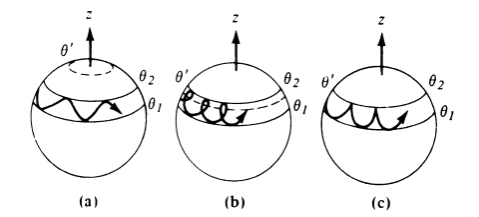Overview

Symplectic geometry is a modern and rapidly-developing field of mathematics that began with the study of the geometric ideas that underlie classical mechanics. This tutorial will begin similarly by introducing the Lagrangian and Hamiltonian formulations of classical mechanics and their resulting dynamical properties, before re-expressing them in the language of differential geometry, that is, in terms of symplectic manifolds. This new setting reveals that classical mechanics is about symmetries in geometry; this will be illustrated by the detailed study of symmetries of mechanical systems, with many concrete examples drawn from physics such as orbital motion and rigid bodies. We will finish with an informal introduction to the problems and techniques considered in modern symplectic topology, such as non-squeezing theorems and the use of pseudoholomorphic curves. There will be ample scope for students to follow their own interests, exploring connections to topics such as quantum mechanics, algebraic geometry, and dynamical systems.
Prerequisites
Multivariable calculus, and familiarity with open/closed sets and convergence as in 112 or 131 will be assumed, but no prior knowledge of physics or geometry will be required. The theory of manifolds and differential forms will be integrated throughout the tutorial and motivated from a physical perspective, from which it becomes most transparent and intuitive. If you're not sure you meet the prerequisites, take a look at the notes for the first few lectures below.Requirements
Each week there will be two 75 minute lectures, as well as a 1 hour problem session/office hours set aside for students to work together on problems (which will not be handed in). Each student will give two presentations in the semester: one short 15-minute presentation early in the semester, and a 30-minute presentation near the end of the teaching period, for which topics will be provided (subject to change based on class size). Finally, a short expository paper will be due at the end of exam period: a list of interesting suggested topics can be found below. Students who are not required to write a paper may instead choose half of the problems to complete and submit at the end of the exam period.✤
Schedule

- Lecture 1: Newton's Laws of Motion
- Lecture2: Lagrangian Mechanics
- Lecture 3: Conservation Laws Problem sheet 1 and presentation topics
- Lecture 4: Hamiltonian Mechanics
- Lecture 5: Holonomic Constraints Problem sheet 1
- Presentations 1: Orbital Motion; Examples of Lagrangian systems
- Presentations 2: Poincare Recurrence; Calculus of variations
- Lecture 5 continued: Smooth Manifolds
- Lecture 6: Tangent Vectors Problem sheet 2 and some presentation topics
- Lecture 7: Differential Forms
- Presentations 3: Calculus with Differential Forms Problem sheet 3
- Lecture 8: Symplectic Manifolds, Examples
- Lecture 9: Symplectic Mechanics Problem sheet 2 and Zoom testing
- SPRING BREAK
- Lecture 9 continued: Symplectic Mechanics
- Lecture 10: Lie Groups Problem sheet 4
- Lecture 11: Hamiltonian Group Actions
- Lecture 12: Hamiltonian Group Actions II Problem sheet 4
- Lecture 13: Marsden-Weinstein Theorem (accompanying movie)
- Lecture 14: Arnol'd-Liouville Theorem Problem sheet 5
- Lecture 15: Pseudoholomorphic Curves
- Lecture 16: Gromov Non-Squeezing and Symplectic Topology Review/question and answer session
- (4/20) Final Presentations 1: Garrett + half lecture
- (4/21) Final Presentations 2: Yunchao, Beckham
- (4/23) Final Presentations 3: Jozef, Amir
- (4/27) Final Presentations 4: Dan, Abi
- (4/28) Final Presentations 5: Theo, Spencer
- (4/30) Final Presentations 6: Howard, Anna
✤
General References
- V.I. Arnol'd, Mathematical Methods of Classical Mechanics, 2nd Ed. will be our main reference; make sure you have the second edition.
- A.C. da Silva, Lectures on Symplectic Geometry will be our reference for the second part.
- T. Frankel, The Geometry of Physics, 3rd Ed will be our reference for differential geometry.
Suggested Paper Topics
- Physics: geometric quantization, qualitative orbital dynamics (Abraham-Marsden Part IV), caustics and Lagrangian singularities (Arnol'd Appendix 12), the optics-mechanics analogy (Arnol'd Section 45), symplectic hydrodynamics (Arnold Appendix 2), spinning tops (Arnol'd 30-31), chiral spinning tops, classical thermodynamics as contact geometry, Yang-Mills theory and falling cats, Koopman-von Neumann Theory, topology of spinning tops, black hole thermodynamics...
- Symplectic topology: symplectic toric manifolds, the symplectic camel, symplectic capacities, Atiyah-Guillemin-Sternberg convexity theorem, Lagrangian displacement energy, Hamiltonian Floer theory, exotic Lagrangian submanifolds, symplectic fibrations, Stein and Weinstein manifolds...
- Representation theory: representations of the symplectic group, the metaplectic correction, symplectic geometry of co-adjoint orbits, the orbit method, symplectic structure of character varieties, the Hitchin system...
- Low-dimensional topology: Legendrian knots and wavefronts, symplectic 4-manfolds, connections to gauge theory and topological field theory...
- Algebraic geometry: Kahler manifolds and Hodge theory, Stein manifolds, the Kempf-Ness theorem...
- Dynamical systems: integrable systems and examples, KAM theory, the KdV equation, semiclassical analysis...
- And more: Geometric quantization, Poisson geometry (Arnol'd Appendix 14), contact topology (Geiges), geometric statistics, economics as symplectic geometry, even using contact topology to show hydrodynamics gives a universal Turing machine ... or any of the appendices from Arnol'd's book would make an excellent paper topic.
✤